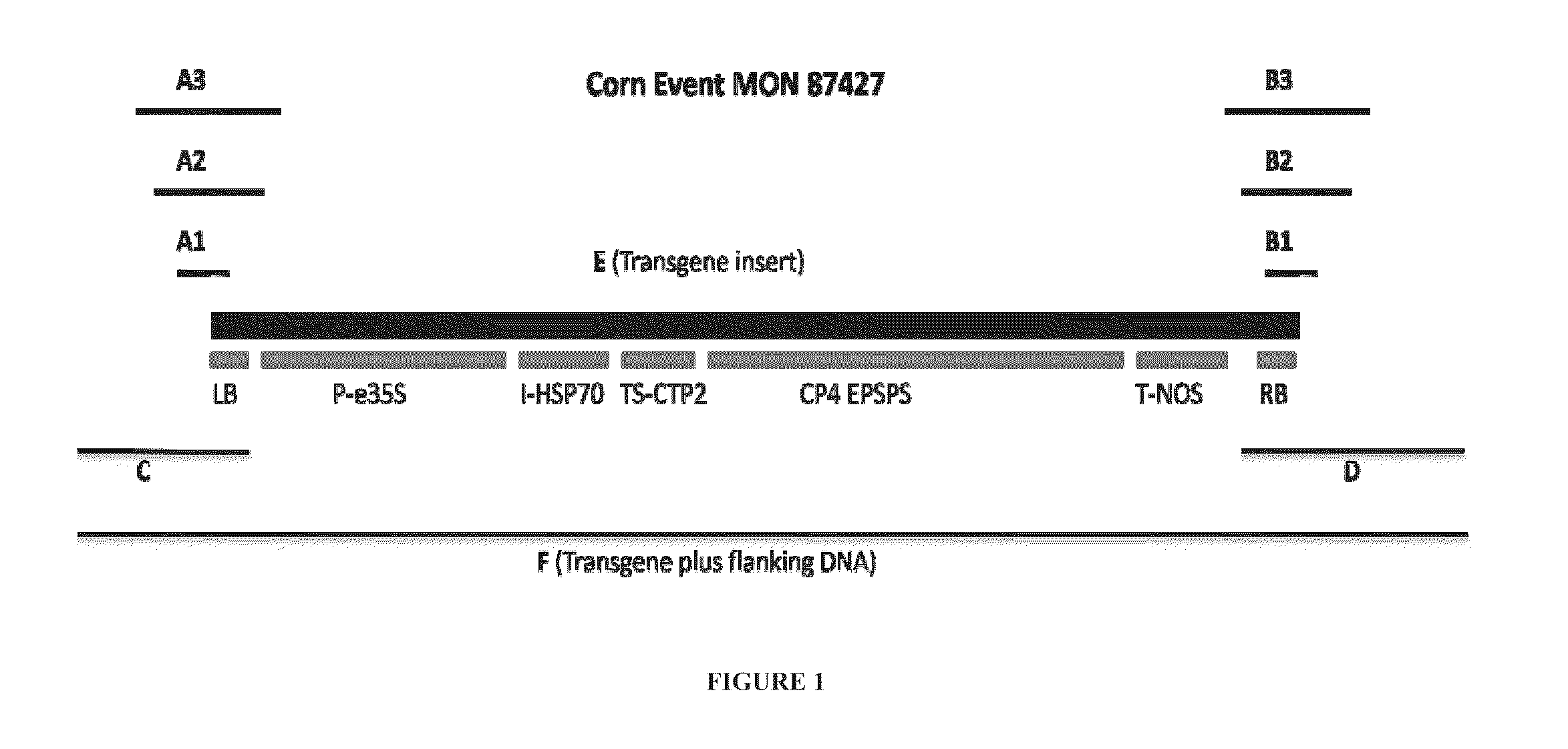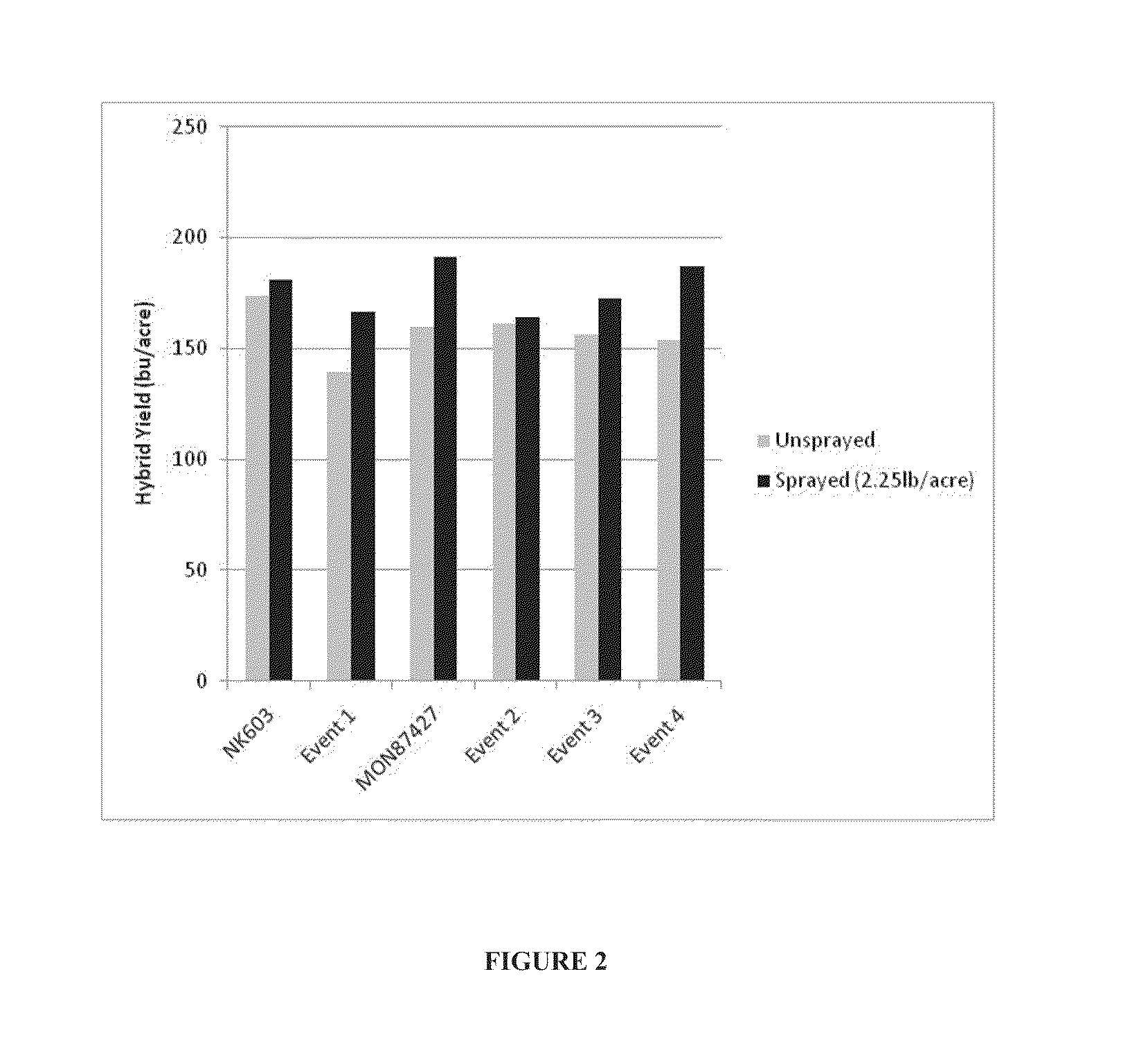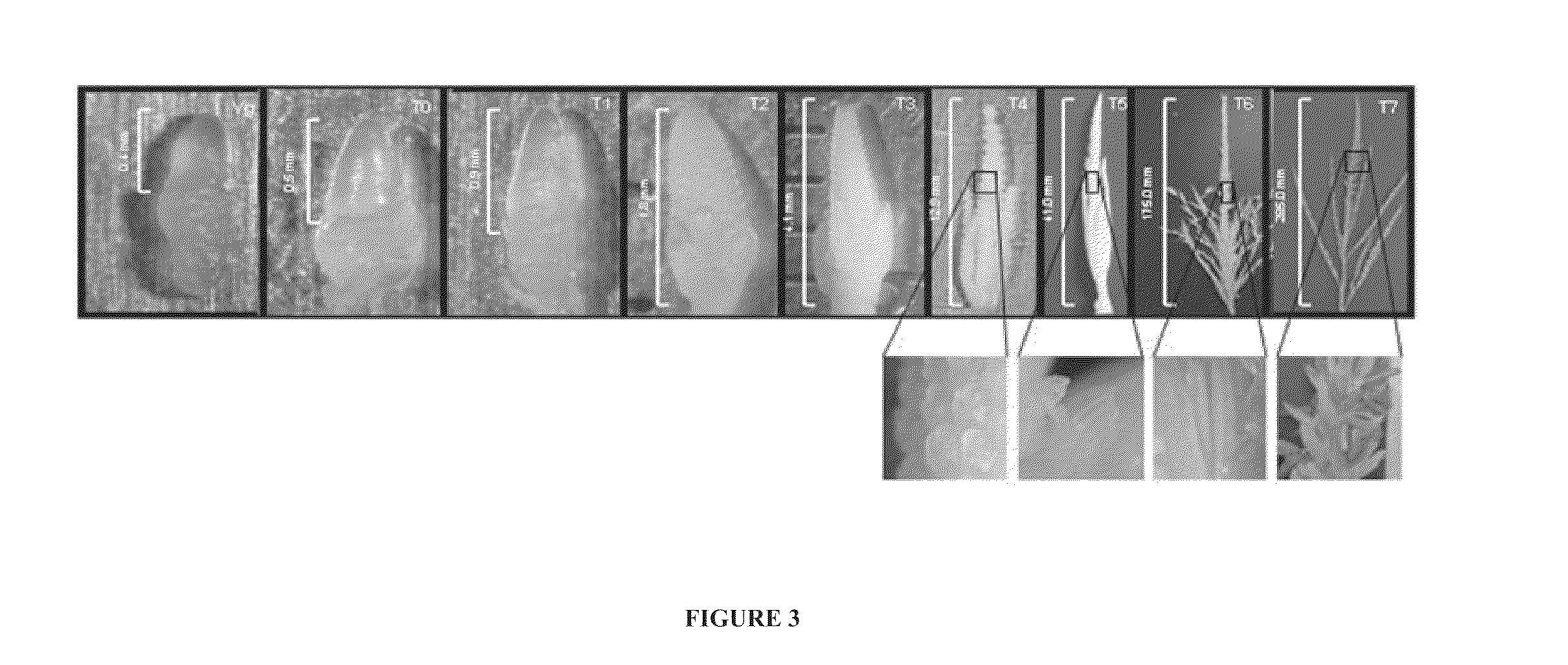Transgenic maize event MON 87427 and the relative development scale
a technology of transgenic maize and relative development, applied in the field of plant breeding, research and agriculture, can solve the problem of missing the optimally effective time for treatmen
- Summary
- Abstract
- Description
- Claims
- Application Information
AI Technical Summary
Benefits of technology
Problems solved by technology
Method used
Image
Examples
example 1
Transformation of Maize and MON 87427 Event Selection
[0116]The maize plant MON 87427 was produced by Agrobacterium-mediated transformation of maize. Maize cells were transformed and regenerated into intact maize plants and individual plants were selected from the population of plants that showed integrity of the transgene expression cassette and resistance to glyphosate. From this population, maize plant event MON 87427 was selected and characterized.
[0117]The transgenic glyphosate tolerant maize plant MON 87427 was developed through Agrobacterium-mediated transformation of maize immature embryos utilizing transformation vector pMON58401. The transgene insert and expression cassette of MON 87427 comprises the promoter and leader from the cauliflower mosaic virus (CaMV) 35S containing a duplicated enhancer region (P-e35S); operably linked to a DNA leader derived from the first intron from the maize heat shock protein 70 gene (I-HSP70); operably linked to a DNA molecule encoding an N-...
example 2
Characterization of MON 87427 DNA Sequences
[0122]The DNA inserted into the genome of maize plant MON 87427 and the flanking genomic sequence was characterized by detailed molecular analyses. These analyses included: sequencing the transgene insert DNA and the genomic DNA flanking the transgene insert, determining the transgene insert number (number of integration sites within the maize genome), determining the copy number (number of copies of transgene DNA within one locus), analyzing the integrity of the inserted gene cassette, analyzing the genomic DNA flanking the insert and the association of the insertion with haplotype regions of the maize genome.
[0123]Sequences flanking the transgene DNA insertion in MON 87427 were determined using PCR techniques. Plant genomic DNA was isolated from the transgenic line from tissue grown under standard greenhouse conditions. Plant tissue was combined with liquid nitrogen and ground to a fine powder using a mortar and pestle. DNA was extracted ...
example 3
Methods Useful for Identification of MON87427 DNA in a Sample
[0125]This example describes methods useful to identify event MON 87427 DNA in a sample. The event flanking sequence(s), wild-type maize genomic sequence, and / or the transgene sequence may be used to design primers and probes for use in such methods. Internal control primer(s) and probe(s) may or may not be included in an assay.
[0126]Endpoint TAQMAN® thermal amplification methods to identify event MON 87427 (event-specific assay) and / or the CP4-EPSPS synthetic gene (a.k.a. CP4-Zm) (transgene-specific assay) of event MON 87427 in a sample are described. The event flanking sequence(s), wild-type maize genomic sequence, and the transgene sequence were used to design primers and probes for use in these assays (Table 1). The DNA primers used in the event-specific assay are primers SQ12763 (SEQ ID NO: 17) and SQ12886 (SEQ ID NO: 18) with 6-FAM™ labeled probe PB4352 (SEQ ID NO: 19). The DNA primers used in the transgene-specific ...
PUM
| Property | Measurement | Unit |
|---|---|---|
| temperatures | aaaaa | aaaaa |
| temperatures | aaaaa | aaaaa |
| temperature | aaaaa | aaaaa |
Abstract
Description
Claims
Application Information
 Login to View More
Login to View More - R&D
- Intellectual Property
- Life Sciences
- Materials
- Tech Scout
- Unparalleled Data Quality
- Higher Quality Content
- 60% Fewer Hallucinations
Browse by: Latest US Patents, China's latest patents, Technical Efficacy Thesaurus, Application Domain, Technology Topic, Popular Technical Reports.
© 2025 PatSnap. All rights reserved.Legal|Privacy policy|Modern Slavery Act Transparency Statement|Sitemap|About US| Contact US: help@patsnap.com



